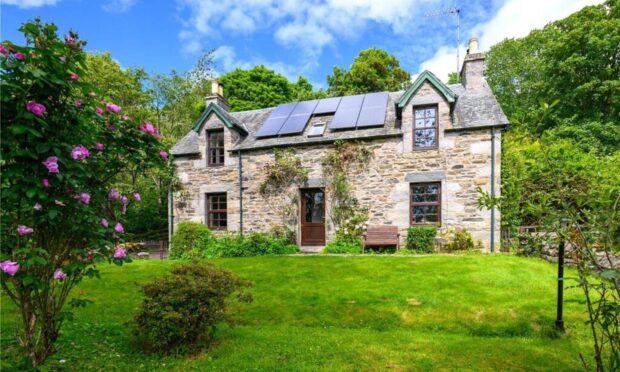When it comes to a universally acknowledged beauty, there’s one plant that turns everyone’s heads. Can you guess which one Brian Cunningham means?
Who doesn’t love an Iris?
In chats with fellow gardeners there are plenty plants that, when mentioned, get a response of “that doesn’t grow for me” or “I don’t like the look of that one”, but in all my years I can’t ever recall a bad word said against irises. They just seem to be one of those dependable group of plants giving us some wonderful, colourful and showy flowers, failing to offend.
Iris, in Greek mythology, was the name of the rainbow goddess who passed messages between Heaven and Earth and in doing so, let her scarf scatter the fields below with the colours of the rainbow. I don’t think any other description could fit the flowers of this plant more perfectly.
It’s a very large group of plants, meaning no matter if you garden in dry, moist or wet soils, or only have room for a glasshouse, there is an iris suitable for you, and with some thought and planning you could have one flowering in your garden from late winter into summer.
Some of the first to start flowering in February and March are the dwarf and alpine bulbs of the reticulata iris species. They require a free draining soil. I like to grow the bulbs of the variety “Katherine Hodgkin”, which has pale blue flowers with very detailed markings on the flowers. I have them in a pot with a compost mix of 50:50 John Innes number three compost and grit, under the cover of my glasshouse.
They are such a welcome sight at this time of year where pots can be bought for making a winter display in your containers planted alongside snowdrops, trailing ivies and hellebores.
My garden education on spring flowering bulbs was taken to a whole new level whilst working in the Alpine department of the Royal Botanic Garden Edinburgh. The spring flowering display of bulbs from around the northern hemisphere on show in the traditional Alpine house truly is a wonderful sight, but it was the Juno irises which grow in semi-arid conditions on the mountainsides of the Middle East and Central Asia that intrigued me most.
Other than iris magnifica which we could also grow outdoors in the rock garden, these more exotic-looking irises need more attention in their care. First planted in deep pots made of clay, they are then plunged into beds of sand in a well-ventilated glasshouse. The idea being to assist with the sometimes tricky watering regime of such plants, the porous clay pots will absorb moisture from the wet sand, which also keeps the roots cool during the summer months.
There are two types of iris currently on show in our gardens.
The first, known as “bearded iris” due to the caterpillar-like line of thick hairs in the throat of the large flowers, are maybe the most familiar to us.
The flowers and sword-like foliage grow from rhizomes, which love a good baking in the sun for the plant to be at its best.
To achieve this I like to dig the planting hole and then create a v-shaped ridge for the rhizome to sit on what now becomes the surface of the spoil, the roots then flow naturally down the sides of the ridge, then they are covered with soil and firmed gently to keep the plant in place.
Whereas the best time to lift and split these is immediately after flowering, I find the best time to increase my stock of the Siberian irises in the second group flowering just now is in spring.
I always divide the grass-like foliage into clumps at least the size of a saucer plate, to get a flower in the same season. I think these are my favourite kind of irises, probably because they are happiest growing with all my other favourite plants in the woodland garden, which has good composted leaf-rich soil, moist with some shade, though this isn’t necessary for these irises.
One of my favourites in this group is iris bulleyana. The detail in the flowers just has to be seen to be believed, but if you wish to see more of this group of irises then I recommend a visit to Craigtoun Park outside St Andrews, which holds the national collection of these plants.
Irises make great garden plants that can fit into any planting scheme, growing with virtually any other plant. Rhododendron, shrubs, peonies and Berberis make particularly good backdrops to grow them against whilst roses, astilbe, primula and geranium are some of the perfect plant partners.
And florists use these as a special addition to cut flower displays indoors.
So not to damage the delicate petals which can easily tear, it is best to cut them before the bud unfurls, allowing them to open in the vase.
Any glasshouse I own or any garden I live or work in won’t ever be complete without at least one iris – and I don’t think I’m the only one.
Brian Cunningham is a presenter on BBC’s The Beechgrove Garden and head gardener at Scone Palace. Follow him on Twitter @gingergairdner












